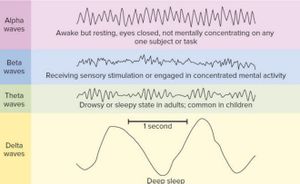Oneirogens
An oneirogen, is a substance or experience which enhances dream states. There are many suggested non-psychedelic plants, chemicals and experiences which are thought to induce an oneirogenic states. Those with the best scientific backing, include:

Plants
Plants contain a variety of chemicals which can work concurrently via the entourage effects. The main plants which are suspected of having oneirogenic properties include:
- Dream herb (Calea zacatechichi synonym. ternifolia) - traditionally used in Central America may be taken as a tea or smoked[1][2].
- African dream herb (Entada rheedii) - an African traditional medicine where the dried seeds are powdered and smoked in a pipe before sleeping.
- Mugwort (Artemisia vulgaris) - Thujone, the primary component of absinthe, is present in mugwort oil and in Korean tradition has been used in late night steam baths to encourage vivid dreams.
- Red Spider Lily (Lycoris radiata) contains Galantamine which has been shown to substantially increase the frequency of lucid dreams with a minimal side effect profile[3].
Dream Enhancement
There is very little scientific data on dream enhancement. One reason for this is during REM sleep, the skeletal muscles of the sleeping body are inhibited which makes it otherwise impossible for the dreamer to signal that they are in a lucid state[4]. Although this has been known to malfunction in atypicals in the form of sleepwalking.
Simulation theory
There has been some recent scientific interest on the idea that REM dreams are a kind of a simulation of the real world on a higher cognitive level implies that dreaming could alter waking performance[4].
References
- ↑ Sałaga M, Fichna J, Socała K, Nieoczym D, Pieróg M, Zielińska M, Kowalczuk A, Wlaź P (June 2016). "Neuropharmacological characterization of the oneirogenic Mexican plant Calea zacatechichi aqueous extract in mice". Metab Brain Dis. 31 (3): 631–41. doi:10.1007/s11011-016-9794-1. PMC 4863909. PMID 26821073.
- ↑ Mossoba ME, Flynn TJ, Vohra S, Wiesenfeld P, Sprando RL (2016). "Evaluation of "Dream Herb," Calea zacatechichi, for Nephrotoxicity Using Human Kidney Proximal Tubule Cells". J Toxicol. 2016: 9794570. doi:10.1155/2016/9794570. PMC 5040790. PMID 27703475.
- ↑ Pre-sleep treatment with galantamine stimulates lucid dreaming: A double-blind, placebo-controlled, crossover study. LaBerge S, LaMarca K, Baird B. PLoS One. 2018 Aug 8;13(8):e0201246. doi: 10.1371/journal.pone.0201246. PMID: 30089135; PMCID: PMC6082533. Accessed on 6 December 2022 via: https://www.ncbi.nlm.nih.gov/pmc/articles/PMC6082533/
- ↑ 4.0 4.1 Lucid dreaming: Neural virtual reality as a mechanism for performance enhancement. Commentary on “The neurobiology of consciousness: Lucid dreaming wakes up” by J. Allan Hobson, Daniel Erlacher1 & Heather Chapin2, 1Institute of Sports and Sports Science, Heidelberg University, Germany 2Florida Atlantic University, USA